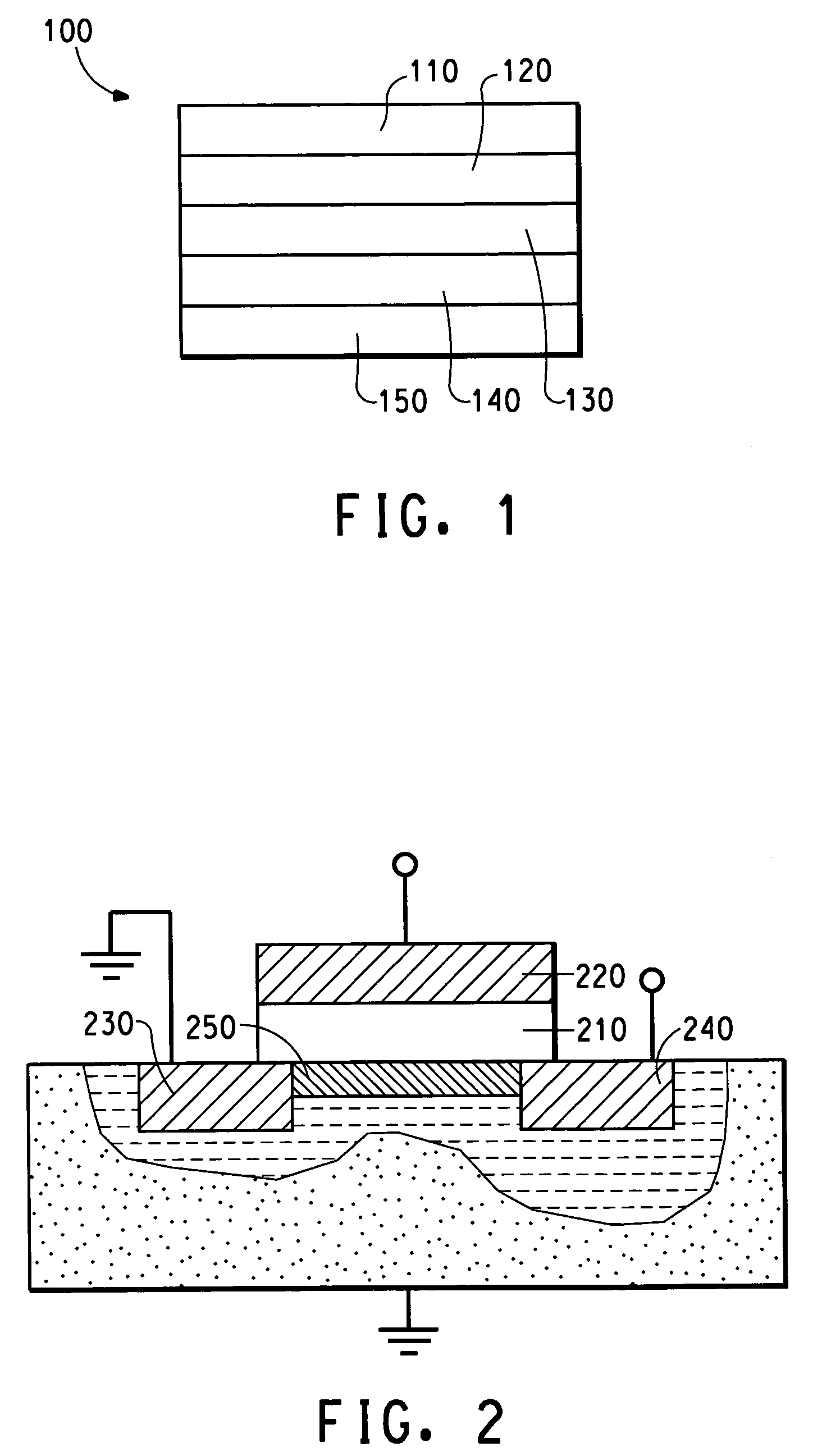Water dispersible polyanilines made with polymeric acid colloids for electronics applications
a technology of polymeric acid colloids and polyanilines, which is applied in the field of aqueous dispersions of electrically conducting polymers of anilines, can solve the problems of corrosion within the device, low ph of water soluble polymeric sulfonic acids, and reduced stress li
- Summary
- Abstract
- Description
- Claims
- Application Information
AI Technical Summary
Benefits of technology
Problems solved by technology
Method used
Image
Examples
example 1
[0095]This example illustrates preparation of an aqueous PAni / Nafion® dispersion in which the dispersed polyaniline is made with aniline and Nafion®, a colloidal perfluoroethylenesulfonic acid. This example also illustrates non-dispersibility and low moisture uptake of the dried solids prepared from the aqueous PAni / Nafion® dispersion. It also illustrates neutrality of the water in contact with the dried films.
[0096]A Nafion® polymer dispersion made according to the method described in U.S. Pat. No. 6,150,426 patent issued in Nov. 21, 2000 was used in this invention. The Nafion® polymer dispersion sample contains 12.0%(w / w) perfluoroethylenesulfonic acid colloids in water and the Nafion® polymer has 1050 g / mole of monomer unit of acid. 191.63 g (21.90 mmoles of Nafion® monomer units) of the Nafion® polymer dispersion and 206.32 g de-ionized water were poured into a jacketed 500 ml three-necked flask. The flask was equipped with a stirring paddle powered by an air-driven overhead sti...
example 2
[0101]This example illustrates preparation of an aqueous PAni / Nafion® dispersion and effect of resin treatment on dispersion stability and pH. This example also illustrates non-dispersibility and low moisture uptake of the dried solids prepared from the aqueous PAni / Nafion® dispersion. It also illustrates neutrality of the water in contact with the dried films.
[0102]In this invention example, SE10072 Nafion® was used for polymerization with aniline. The Nafion® is commercially available from E. I. Dupont de Nemours & Company, Delaware, USA. Nafion® in SE10072 has colloid size in the range of 40 nm to 140 nm as opposed to the Nafion® used in invention Example 1, which has colloid size in the range of 2 to 30 nm cited in U.S. Pat. No. 6,150,426 patent issued in Nov. 21, 2000.
[0103]The polymerization procedure described in invention Example 1 for making PAni / Nafion® was followed closely. A SE10072 Nafion® colloidal dispersion used in this example contains 11.2%(w / w) perfluoroethylenesu...
example 3
[0106]This example illustrates preparation of a high pH aqueous PAni / Nafion® dispersion and device properties.
[0107]In this invention example, SE10072 Nafion® was used for polymerization with aniline. The Nafion® is commercially available from E. I. Dupont de Nemours & Company, Delaware, USA. The Nafion® in SE10072 has colloid size in the range of 40 nm to 140 nm as opposed to the Nafion® used in invention Example 1, which has colloid size in the range of 2 to 30 nm cited in U.S. Pat. No. 6,150,426 patent issued in Nov. 21, 2000.
[0108]The polymerization procedure described in invention Example 1 for making PAni / Nafion® was followed closely. A SE10072 Nafion® colloidal dispersion used in this example contains 11.2%(w / w) perfluoroethylenesulfonic acid colloids in water. The Nafion® polymer has about 920 g / mole of monomer unit of acid. 194.6 g (23.69 mmoles of Nafion® monomer units) of the Nafion® dispersion and 602.28 g de-ionized water were poured into a jacketed one liter three-neck...
PUM
| Property | Measurement | Unit |
|---|---|---|
| Acidity | aaaaa | aaaaa |
| Electrical conductor | aaaaa | aaaaa |
Abstract
Description
Claims
Application Information
 Login to View More
Login to View More - R&D
- Intellectual Property
- Life Sciences
- Materials
- Tech Scout
- Unparalleled Data Quality
- Higher Quality Content
- 60% Fewer Hallucinations
Browse by: Latest US Patents, China's latest patents, Technical Efficacy Thesaurus, Application Domain, Technology Topic, Popular Technical Reports.
© 2025 PatSnap. All rights reserved.Legal|Privacy policy|Modern Slavery Act Transparency Statement|Sitemap|About US| Contact US: help@patsnap.com



